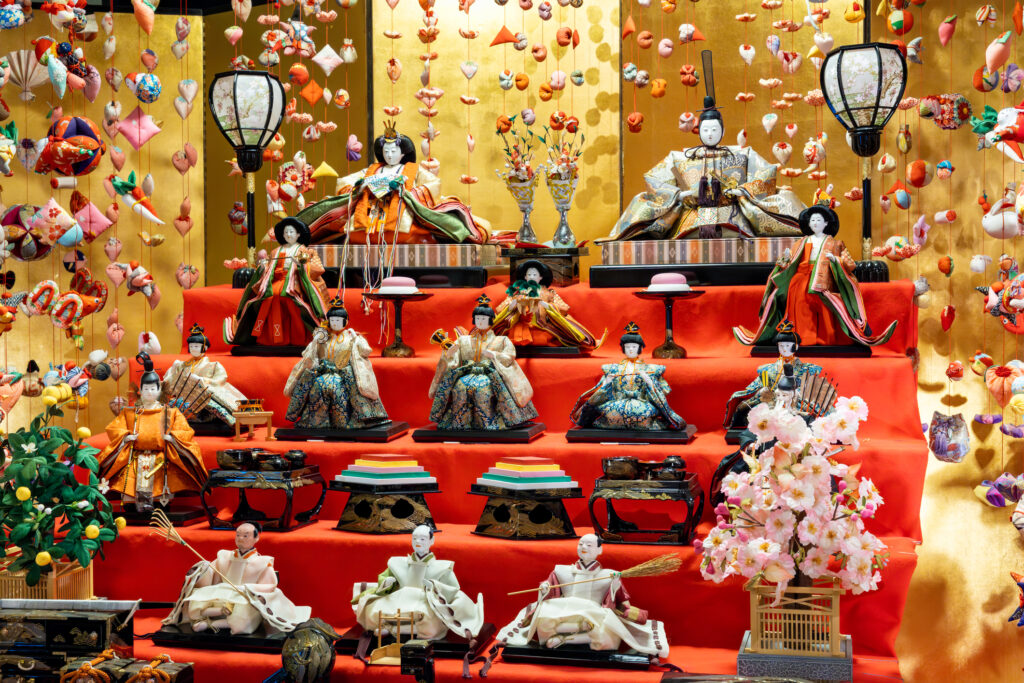Here, you can see an image of my seven-tiered Hina doll set–a cherished gift from my grandpa when I was a baby.
Held on March 3rd every year, Hinamatsuri is a seasonal festival in Japan that dates back to the Heian Period (794 – 1185) and prays for the healthy growth, prosperity and happiness of girls (primarily those below age 10).

During the festival period, households across the country follow the tradition of setting up Hina dolls on a red carpeted, multi-tiered platform. Dressed in traditional court attire from the Heian Period, the dolls represent the Emperor, Empress, attendants, and musicians, which are believed to absorb misfortune and serve almost like a good luck charm in the home. Although the dolls can vary in quality depending on the price, the colors of their costumes and delicately hand-painted expressions are generally very well done.
Setting up the display every year takes roughly an hour. We always use a reference picture to ensure that all the dolls are positioned correctly. In fact, our family’s annual discussion often centers around how to position the Emperor and Empress, as the placement differs between regions. In Kanto, the Emperor is placed on the right from his perspective, while in Kansai, he is positioned on the left.
Historically, highest-ranking individuals always sat on the left from their viewpoint, which aligns with the Kansai style. However, the positioning became flipped in accordance with Western rules during the Meiji Period (1868 – 1912) when Japan opened its borders to the world. If you ever get a chance to see photos or appearances of the Imperial Family on the news (for example, during the New Year’s greeting), you will notice that the Emperor (who resides in Tokyo–the Kansai Region), follows the Western custom and stands (or sits) on the right side from his perspective. It is understandable that the more traditional city of Kyoto and other areas of Kansai still implement the original style.
Learn more about Hina dolls: https://www.kyohaku.go.jp/eng/learn/home/dictio/senshoku/hina/
